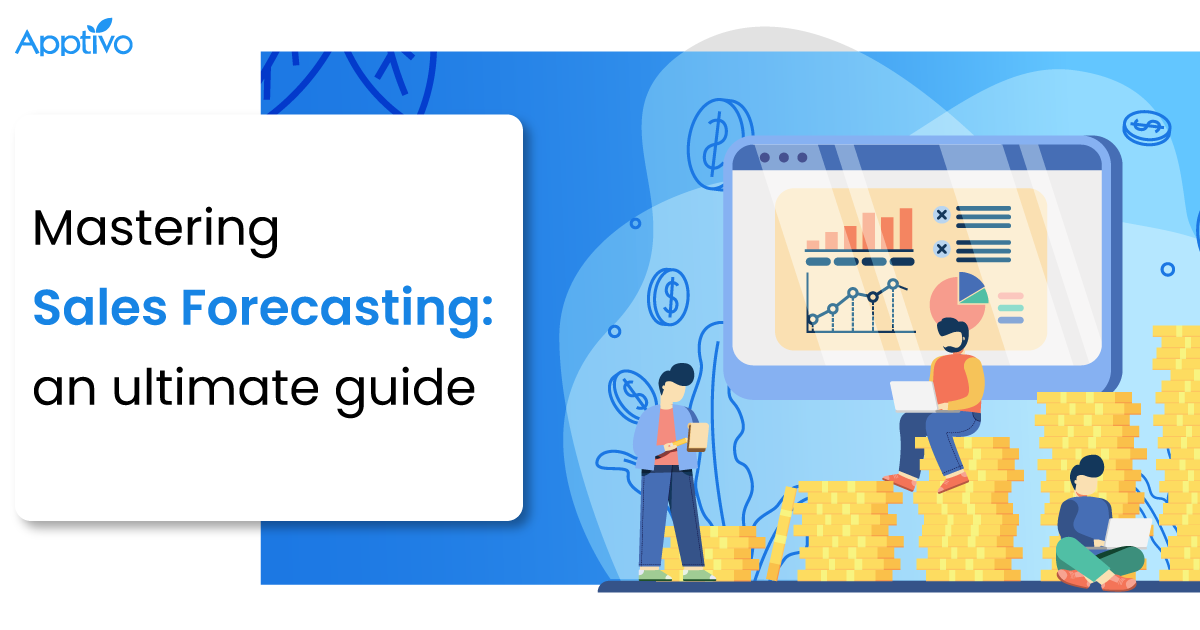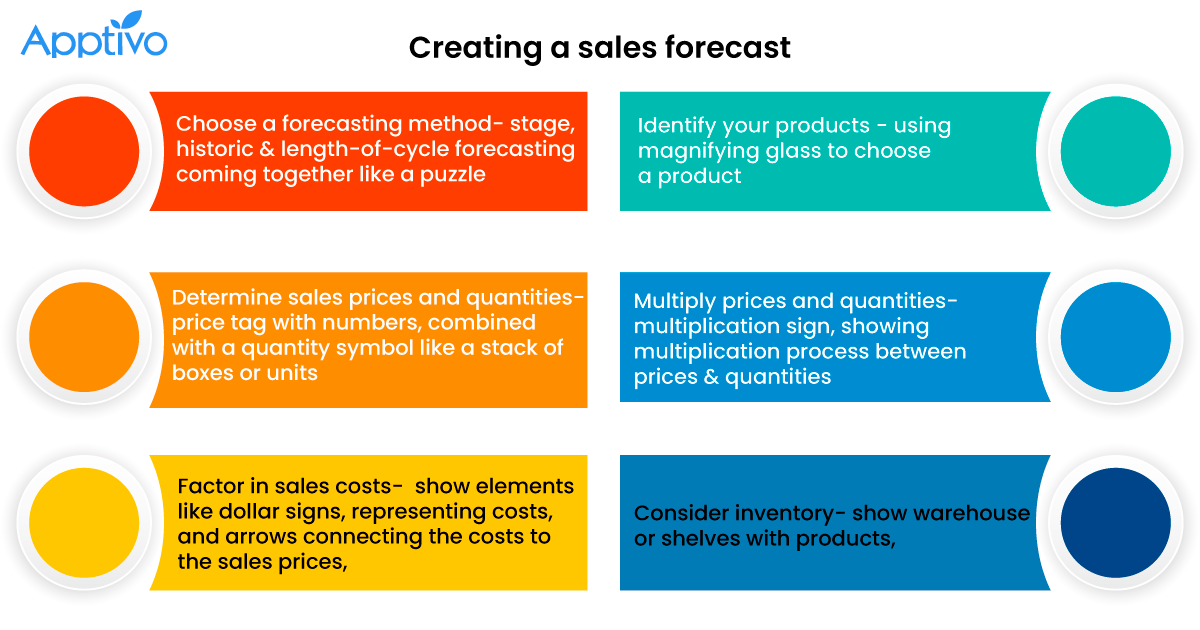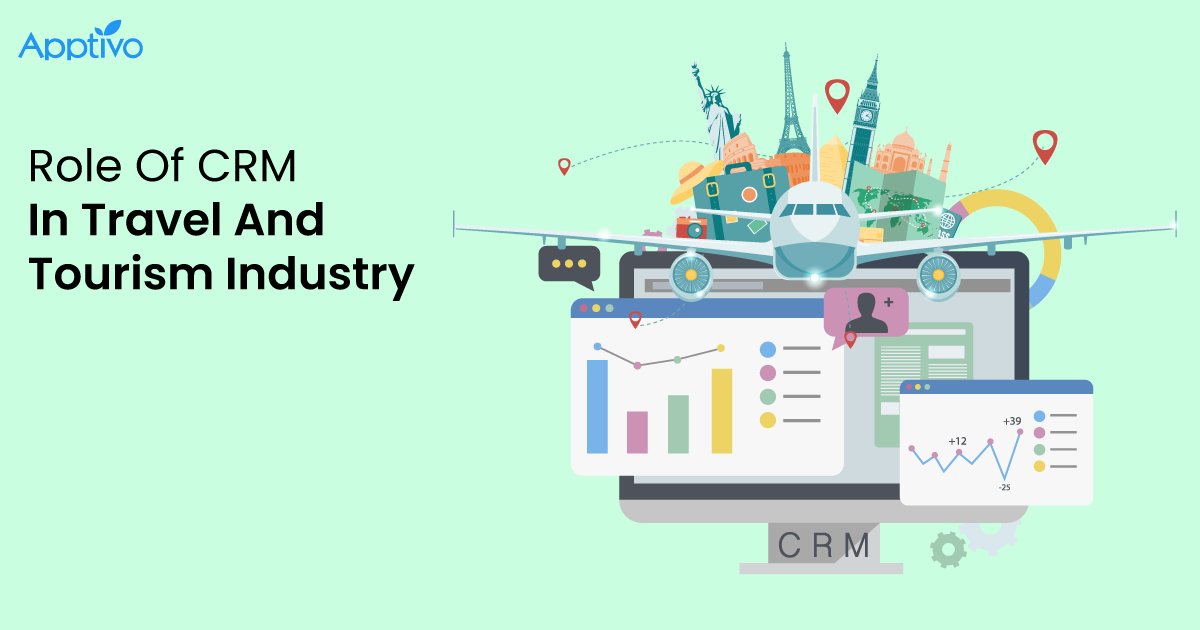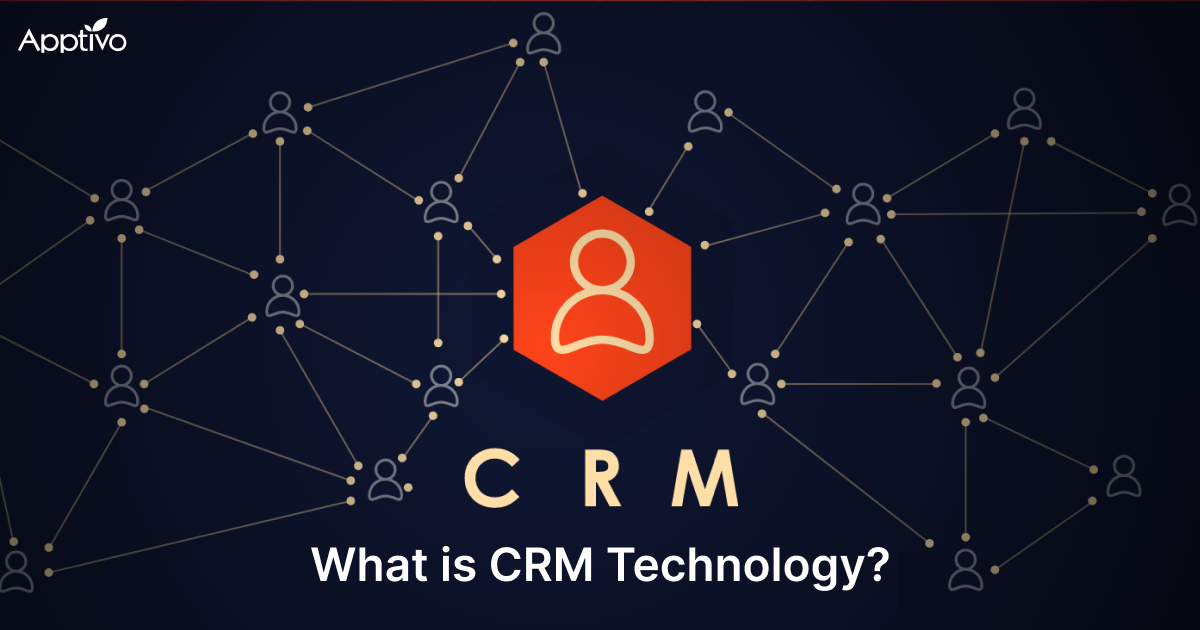 |
2. Why are sales forecasting essential for a business?
3. How to create a sales forecast?
4. Benefits of having an accurate sales forecast like Apptivo
Sales forecasting is like a fortune cookie for the success of a firm and personal career progress. It is a delectable treat that gives salespeople and company leaders useful insights and suggestions. Accurate sales predictions, like cracking open a cookie to uncover a secret message, reveal the road to setting attainable targets, making educated budgeting decisions, finding promising prospects, and, eventually, maximizing income.
Inaccurate sales projections, on the other hand, might leave salespeople feeling dissatisfied and missing out on prospective possibilities, much like a broken cookie that fails to provide its expected fortune. It’s time to bake the ideal sales prediction cookie, ensuring that its secret message is actually a game changer.
What is a sales forecast?
Sales forecasting is analyzing current and past sales information to project the team’s sales performance for a future time, whether monthly, quarterly, semiannually, or annually. The goal of sales forecasting is to foresee probable challenges and take proactive efforts to meet sales targets within the timeframe specified.
Sales projections take into account a variety of elements that may have an impact on future sales. These elements include:
- Recent growth or contraction rates in any industry
- Overall state of the economy
- Sales figures of the competitors for similar products or services
- Launch of new products or services in any company’s portfolio
- Fluctuations in operating costs or sales prices
- Changes in regulations that may impact the business operations
- Marketing activities undertaken by a company
While sales projections are based on current data, their primary focus is on anticipating future situations. They play an important role in a company’s overall sales strategy and should be considered in conjunction with other objectives and goals for the allotted period.
Why are sales forecasting essential for a business?
Failure to conduct sales predictions can have serious consequences for a business. Without precise sales forecasting, there is no visibility into future revenue, which can lead to a variety of issues and unfavorable effects.
Let’s consider an electronics firm. If this company chooses not to run sales predictions and instead relies only on previous trends and assumptions. As a result, businesses are caught off guard when consumer demand for their products falls suddenly due to a new competitor entering the market with more advanced features at a cheaper price. Because the business did not expect this change, they are continuing to make goods based on previous sales levels.
As a consequence, they may experience several downsides:
Cash flow issues: With dwindling sales, they are unable to generate enough income to meet their expenses. They have extra inventory, but not enough finances to invest in new product development or marketing campaigns.
Inefficient resource allocation: Without sales forecasts, they cannot effectively allocate their internal resources. They may have an excess of specific products or a sales team that is understaffed, resulting in inefficiencies and missed opportunities.
Missed growth opportunities: Due to a lack of sales forecasting, they are unable to anticipate possible bottlenecks or opportunities. They miss out on capitalizing on rising trends or adapting their tactics to market shifts.
Financial insecurity: If cash flow problems remain and revenues continue to fall, they may face layoffs or possibly bankruptcy. The company’s long-term existence is jeopardized due to a lack of foresight and financial planning in tough times.
If these people had used sales forecasting, they would have been able to foresee the market transition and adjust their strategy accordingly. To maintain their market share, they may have proactively allocated resources, decreased production levels, and concentrated on innovative features or competitive pricing.
How to create a sales forecast?
 |
Choose a forecasting method
In B2B sales, businesses can gain significant insights into their future sales potential by utilizing methodologies such as opportunity stage forecasting, historic forecasting, or length-of-cycle forecasting. Companies can make predictions about the likelihood of successfully closing deals at various phases of the sales cycle by carefully reviewing the progression of each opportunity inside the sales funnel, analyzing historical data, and tracking growth patterns. This vital data enables organizations to make real-time changes to their plans, such as prioritizing high-potential leads, optimizing resource allocation, and improving the sales process to achieve optimal conversions and revenue production.
Identify your products
In order to preserve accuracy in sales analysis, it is essential in B2B sales to include all currently available products or services while removing any discontinued items. Businesses can gain more precise insights into their sales potential by focusing simply on active offerings. This real-time technique enables organizations to precisely measure the impact of each active product or service on revenue and growth expectations, allowing them to make smart sales strategy decisions.
Determine sales prices and quantities
When it comes to B2B sales, organizations must set the pricing for their products or services as well as estimate the expected sales volume. Businesses can quantify their sales potential in a methodical manner by using the forecasting methodologies discussed above. These methods, which include opportunity stage forecasting, historical forecasting, and length-of-cycle forecasting, enable businesses to forecast the amount of sales they expect at various pricing levels. This information enables firms to make strategic price decisions and set achievable sales targets that are in line with their predicted sales volume, so optimizing revenue creation.
Multiply prices and quantities
To estimate revenue estimates in B2B situations, organizations can multiply the expected quantities of items or services by their corresponding sales prices. These computations should be specific to the forecasting approach being used. When using opportunity stage forecasting, for example, organizations can update revenue estimates based on the likelihood of successfully closing agreements at each step, hence modifying quantities and prices accordingly.
Similarly, in historical forecasting, businesses can examine past sales data to determine average quantities sold at various price points and apply that knowledge into revenue forecasts. In the case of length-of-cycle forecasting, projections are generated about how long it will take for a contract to advance through the sales cycle, allowing for modifications in quantities and prices to correspond with the expected timeline. Businesses can develop accurate revenue estimates by making these modifications in accordance with the chosen forecasting strategy.
Factor in sales costs
Businesses can assess their profit margins and acquire a more precise financial view by multiplying the cost connected with each transaction by the number of sales made. This stage enables firms to calculate their total cost of sales and, as a result, evaluate the profitability of their activities. Businesses can gain a better understanding of their profit margins and make more informed decisions about pricing strategies, cost optimization, and overall financial performance by taking into account factors such as production costs, overhead expenses, and any other relevant costs incurred during the sales process.
Consider inventory
Consolidating revenues and costs into bigger categories may be advantageous in B2B cases when organizations have a diverse and extensive inventory. This stage tries to streamline the forecasting process and manage data effectively. Firms can simplify revenue and expense calculations by grouping related items or services into broader categories, allowing for a more efficient examination of sales performance and financial trends. This consolidation allows organizations to acquire a full picture of their whole revenue and expense structure, making it easier to discover patterns, track key KPIs, and make informed decisions to optimize inventory management, pricing strategies, and resource allocation.
Benefits of having an accurate sales forecast like Apptivo
Having an accurate sales forecast, such as Apptivo, offers several benefits to businesses:
Improved decision-making
Accurate sales projections provide vital insights that assist firms make smart resource allocation, budgeting, personnel, and strategic planning decisions. It enables firms to effectively manage resources and make timely adjustments to their strategies.
Efficient resource management
Businesses may better manage their resources, such as inventory, production capacity, and employee levels, if they have an accurate sales prediction. This eliminates overstocking and understocking, optimizes production schedules, and provides appropriate manpower to fulfill expected demand.
Enhanced budgeting and financial planning
A credible sales forecast helps firms estimate income expectations, allowing them to construct realistic budgets and complete financial plans. It allows for better cash flow management, spending control, and overall financial stability.
Improved sales performance and target setting
Sales forecasts enable firms to create realistic targets and sales goals. Sales teams may coordinate their efforts and tactics based on predicted numbers, allowing them to focus on key areas of growth and maximize their sales potential.
Effective market and demand analysis
Businesses can analyze market trends, customer behavior, and demand patterns with accurate sales projections. This study aids in the identification of emerging market prospects, the prediction of client preferences, and the adjustment of marketing and sales strategies as needed.
Improved customer relationship management
Having a solid sales forecast allows firms to better understand their customers’ needs and preferences, allowing for better customer relationship management. It enables personalized marketing, better customer service, and tailored product offerings based on anticipated demand.
Sales forecasting software and tools
There are numerous sales forecasting software and tools on the market. Here are some popular choices:
Apptivo
Businesses obtain several benefits and features by utilizing Apptivo’s cloud-based sales forecasting software. Sales managers can easily track the success of their sales efforts, allowing for more informed decision-making and strategizing. The programme promotes seamless team cooperation, allowing for excellent communication and coordination for improved sales success. Furthermore, integrating customer data within the programme enables sales managers to detect patterns, preferences, and insights, resulting in enhanced overall sales tactics and increased customer satisfaction.
Anaplan
By combining historical data, market trends, and external factors, Anaplan enables organizations to produce reliable real-time sales predictions. It includes advanced analytics, scenario planning, and the ability to monitor and change estimates, allowing for better resource allocation and sales growth.
Tableau
Tableau is a data visualization and analytics platform that helps firms analyze past sales data, detect trends, and produce visualizations for accurate sales forecasts. It provides an accessible interface for exploring data and generating intelligent forecasts based on observable patterns and trends.
Summary
Sales forecasting is the technique of projecting future sales based on historical and current sales data. It assists firms in making educated decisions, effectively allocating resources, setting realistic goals, and budgeting. Businesses may generate reliable sales projections by analyzing aspects such as industry trends, competition, price, and market demand. This enables them to improve decision-making, manage resources more efficiently, improve budgeting and financial planning, boost sales performance, analyze market trends, and strengthen customer connections. Various sales forecasting software and tools are available to help firms with this process.
Latest Blogs

Role Of CRM In Travel And Tourism Industry
Travel and tourism have been a significant part of everyone’s life since the ancient period. When we skim through the pages of history, It should be noted that humans were initially nomads before they became settled in one place. They...
Read more →
WHAT IS CRM TECHNOLOGY?
Introduction CRM is a technology that helps manage the entire customer information and interactions in order to build and maintain superior customer relationships. The CRM solution replaces spreadsheets and other different applications, which makes it easy for the businesses to...
Read more →
Everything you need to know about the Annual Maintenance Contract!
1. What is an Annual Maintenance Contract? 2. Benefits of Maintenance Contracts 3. How can Apptivo CRM help you manage maintenance agreements and vendors? 4. Summary .synonyms { padding: 30px; border-radius: 10px; padding-top: 10; background: #ecf3ff; } Think about getting...
Read more →
